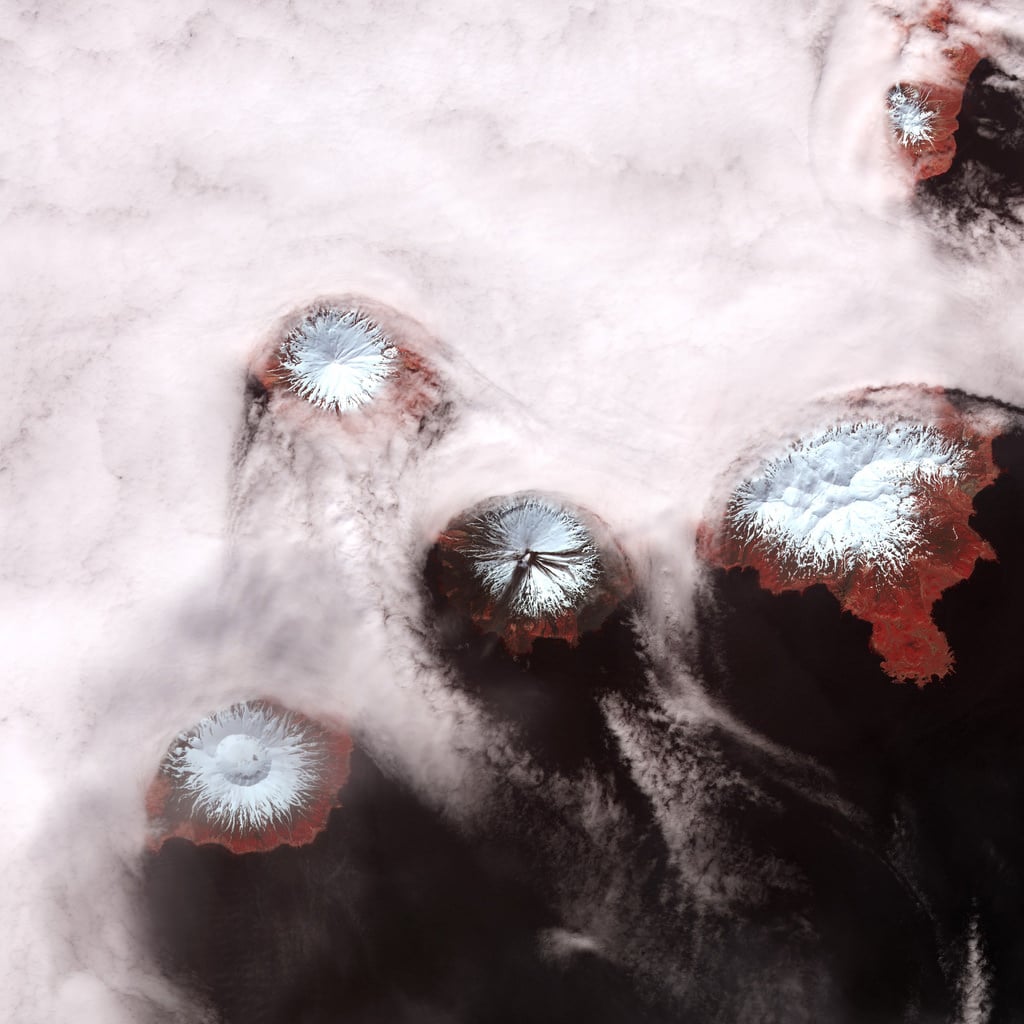[/caption]
You like volcanoes? We've got volcanoes! Three recent images from space show some tremendous volcanoes on Earth. This very unusual image shows a small volcanic plume rising above remote Mount Cleveland on June 1, 2010. The snow-covered upper slopes of the Aleutian alaska volcano were also marked by dark debris flow deposits (descending to the east) and ash fall to the south of the summit. This false-color image was acquired by the Advanced Spaceborne Thermal Emission and Reflection Radiometer (ASTER) aboard NASA's Terra satellite. Snow is white, clouds are pink, vegetation is red, and water is almost black. The Alaska Volcano Observatory reported an ash emission above Mount Cleveland no higher than 16,000 feet (4,900 meters) on May 30th. Mount Cleveland is frequently restless, and the current activity is not unusual, but Ash from Cleveland could threaten flights between Asia and North America. Satellites are the best way to monitor the volcano, which is about 900 miles (1,500 kilometers) from Anchorage.
Next:
@Astro_Soichi
strikes again:
[caption id="attachment_65837" align="aligncenter" width="580" caption="Mt. Fuji in Japan, as seen from the ISS. Credit: NASA/JAXA/Soichi Noguchi"]
[/caption]
Before he left the International Space Station to return back to Earth, Soichi Noguchi, who shared his experiences in space like no other astronaut via his Twitter feed and pictures, took this image of Mt. Fuji in his home country of Japan.
[caption id="attachment_65838" align="aligncenter" width="400" caption="Iceland, without ash and smoke from the Eyjafjallajokull volcano. Credit: ESA"]
[/caption]
Ok, this one isn't specifically of a volcano, but it is one of the first satellite images of Iceland to show smoke- and ash-free skies above Iceland.
This image is from ESA's Envisat satellite and the Medium Resolution Imaging Spectrometer on May 24, 2010.
The Eyjafjallajokull volcano, which had a series of eruptions in April and May, is visible in the dark area on the southern coast. The Vatnajokull glacier (visible in white northeast of Eyjafjallajokull) is the largest in Iceland and in Europe. The white circular patch in the center of the country is Hofsjokull, the country's third largest glacier and its largest active volcano. The elongated white area west of Hofsjokull is Langjokull, Iceland's second largest glacier.
Sources:
Goddard Spaceflight Center
,
@Astro_Soichi
,
ESA
 Universe Today
Universe Today
